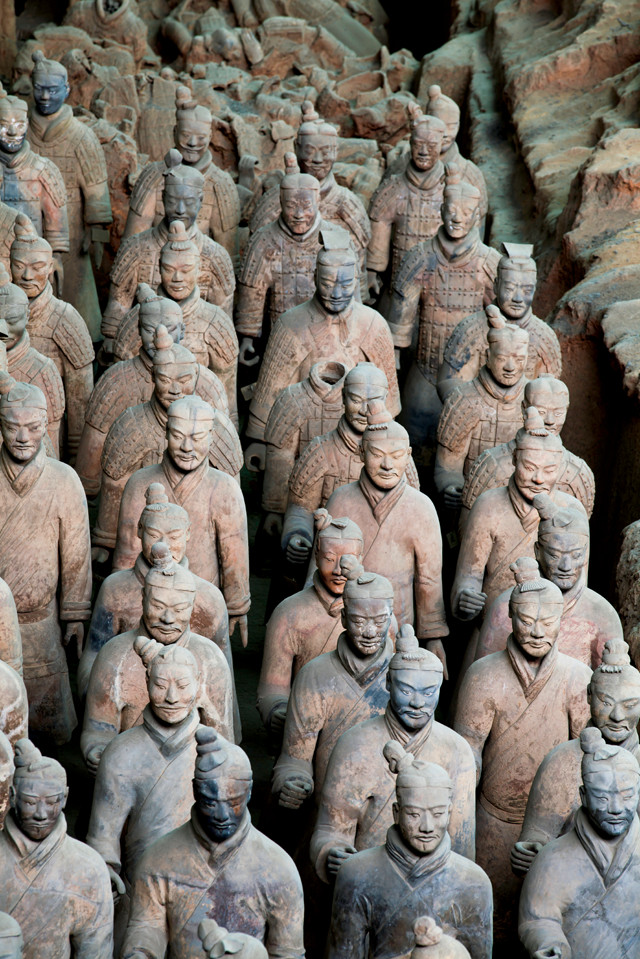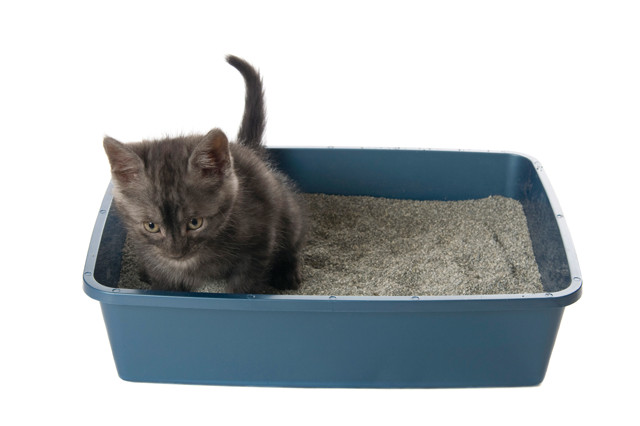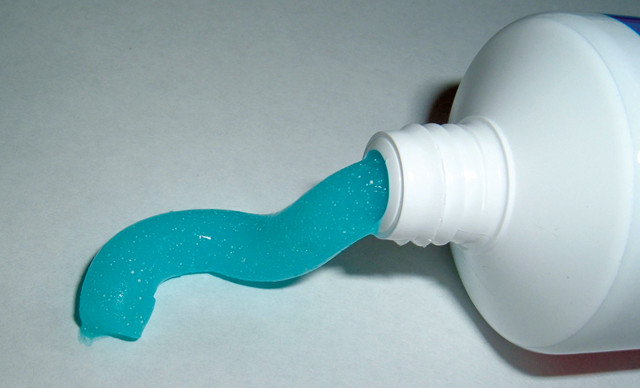
by U.S. Geological Survey Thursday, June 14, 2018
Robert Virta, mineral commodity specialist for the U.S. Geological Survey, prepared the following information on clays, one of the more multifaceted mined mineral commodities.

The 2,200-year-old terracotta warriors found in Emperor Qin Shi Huang's tomb in China are made of clay. Credit: ©iStockphoto.com/xxapril
Clays were one of the first mineral commodities used by people. Clay pottery has been found in archeological sites that are 12,000 years old, and clay figurines have been found in sites that are even older. One of the most famous examples is the 2,200-year-old army of terracotta (clay) warriors — 8,000 of them — found in Shaanxi Province, China. Today, the production of clays is among the largest of the world’s minerals industries, exceeding 1 billion metric tons per year. Clays are used in everything from shampoo to kitty litter to pottery to cement.

Bentonite and fuller's earth are used in kitty litter. Credit: ©iStockphoto.com/Nina Shannon
The term “clay” generally is applied to soil (mineral) particles with diameters less than 2 micrometers. “Clay minerals” can have particle sizes ranging from tens of angstroms to several millimeters. There are many distinct clay minerals, but commercial clays generally include ball clay, bentonite, common clay and shale, fire clay, fuller’s earth and kaolin.
Mineral composition, particle size, plasticity, absorption qualities, firing properties and oil clarification properties are a few of the major characteristics used to distinguish between the six industrial clay categories. Bentonite is composed of smectite minerals, clays that swell in varying amounts when exposed to polar liquids such as water; it is further subdivided into sodium-rich (or swelling) bentonite and calcium-rich (or nonswelling) bentonite. Common clay and shale are composed mainly of illite and chlorite; fire clay is composed mainly of kaolinite, gibbsite and/or diaspore; and fuller’s earth consists primarily of palygorskite and/or montmorillonite clays. Kaolin is composed primarily of kaolinite or kaolin-group minerals whereas ball clay consists primarily of finely crystalline kaolinite.

Smectite clays help give toothpaste its squeezability. Credit: Scott Ehardt
Most clays are mined worldwide, but some commercial clays are mined in only a few locations. Most of the world’s supply of halloysite, a variety of kaolin, is mined in New Zealand, for example. And nearly 70 percent of the world’s supply of palygorskite, a form of fuller’s earth, is mined in the United States; the U.S. is also the world’s leading producer of bentonite and kaolin. Spain provides the bulk of the world’s supply of sepiolite (another clay mineral).
About 25.3 million metric tons of clays were sold or used in the United States in 2009, half of which was common clay and shale. This equates to a per capita use of clay and shale of about 82 kilograms per year.
For more information on commercial clays and other mineral resources, visit http://minerals.usgs.gov/minerals.
There is a large number of clay minerals, which vary widely in mineral composition and other properties. Manufacturers use clays in a large number of products. Some of the more visible products are brick, pottery, roofing tile and the almost-ubiquitous fill dirt at construction sites. But for every visible clay application, there are hundreds of uses of which the public may not be aware. For example, clays make cooking oils clear: The electric charge on the surface of montmorillonite clays allows the clay to bind with chlorophyll and other colored organics in semi-processed oil; the clays are later removed. Bentonite is used in hand lotions and paints to prevent other solid components from settling to the bottom of the container after sitting on the shelf for extended periods of time. Smectite clays make toothpaste thick enough to stay on the toothbrush, but still allow it to be soft enough to flow from the tube when the tube is squeezed.
Bentonite and fuller’s earth are used in some waterless shampoos, as absorbents (oil and grease) and in kitty litter.
Bentonites are also used in some laundry detergent, foundry sand bond and iron ore pelletizing.
Kaolin is used as an all-natural dust coating on certain crops, principally fruits, to control bugs and prevent sunburn. It is also a component in anti-diarrhea remedies. Its primary use is in the paper industry as a filler and a paper coating; it gives paper a glossy surface by forming a smooth, thin, ink-receptive film over the rough cellulose paper surface.
Special clay products made from fuller’s earth, kaolin and expanded shale, rather than common clay, may be used on baseball fields to prepare infields, pitcher’s mounds and outfield warning tracks.
Concrete ships were built using lightweight aggregates (calcined clay, shale and slate) during World Wars I and II to conserve steel.
Ball clay is used mainly in floor and wall tile, pottery and toilets.
Common clay and shale are used in manufacturing brick, cement and lightweight aggregate. Fire clay is used in common brick production as well as refractory applications.
© 2008-2021. All rights reserved. Any copying, redistribution or retransmission of any of the contents of this service without the expressed written permission of the American Geosciences Institute is expressly prohibited. Click here for all copyright requests.